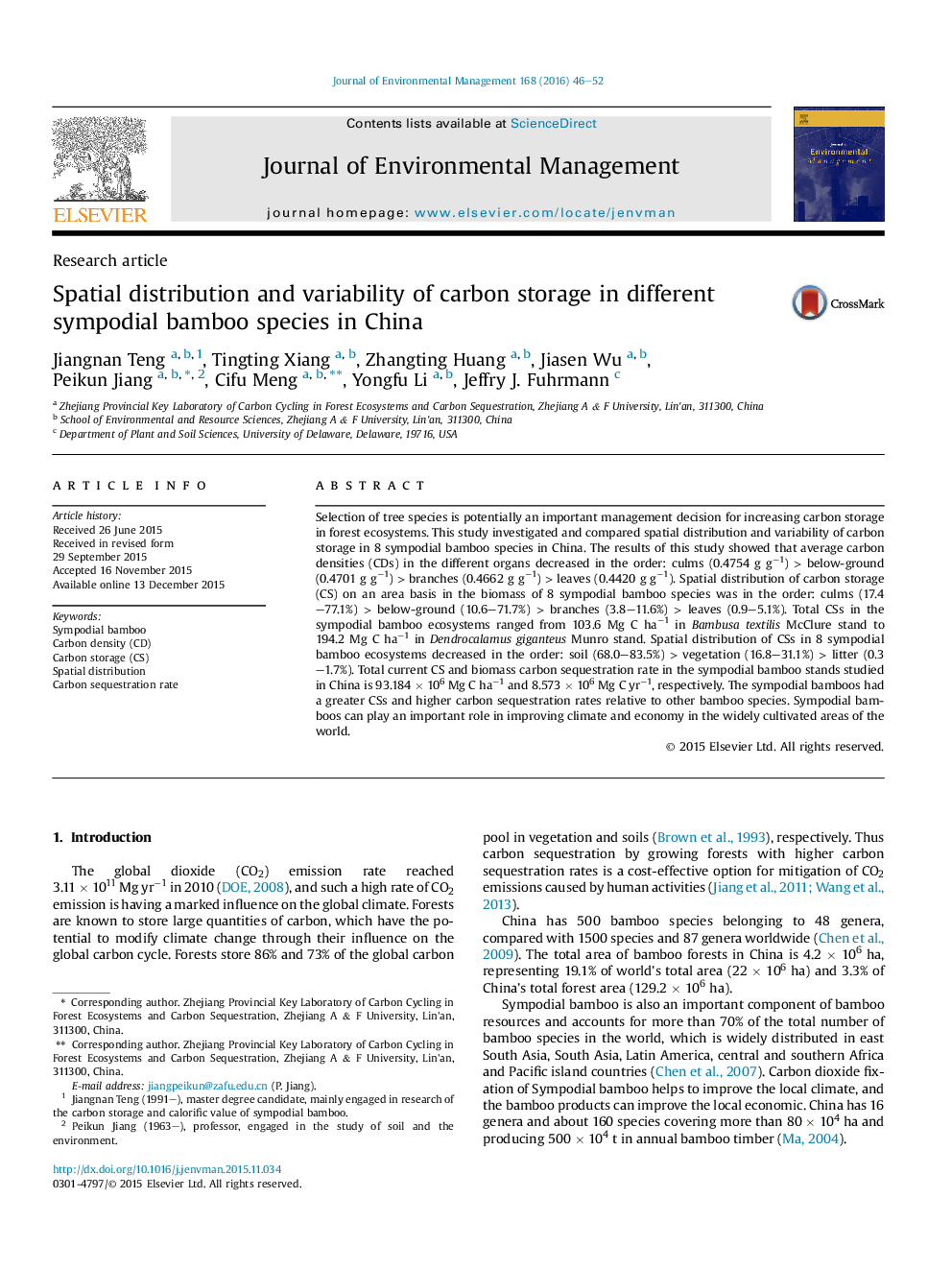| Article ID | Journal | Published Year | Pages | File Type |
|---|---|---|---|---|
| 1055543 | Journal of Environmental Management | 2016 | 7 Pages |
•Sympodial bamboo has greater CSs and carbon sequestration rate relative to other bamboo species.•Management of sympodial bamboo stands to maximize the production of biomass C has the greater potential of producing quantities of biomass C.•There was a significant variation in total CSs in the ecosystem of 8 sympodial bamboo species.•Such variability would increase the rate of terrestrial carbon sequestered by selecting a high CS species.
Selection of tree species is potentially an important management decision for increasing carbon storage in forest ecosystems. This study investigated and compared spatial distribution and variability of carbon storage in 8 sympodial bamboo species in China. The results of this study showed that average carbon densities (CDs) in the different organs decreased in the order: culms (0.4754 g g−1) > below-ground (0.4701 g g−1) > branches (0.4662 g g−1) > leaves (0.4420 g g−1). Spatial distribution of carbon storage (CS) on an area basis in the biomass of 8 sympodial bamboo species was in the order: culms (17.4–77.1%) > below-ground (10.6–71.7%) > branches (3.8–11.6%) > leaves (0.9–5.1%). Total CSs in the sympodial bamboo ecosystems ranged from 103.6 Mg C ha−1 in Bambusa textilis McClure stand to 194.2 Mg C ha−1 in Dendrocalamus giganteus Munro stand. Spatial distribution of CSs in 8 sympodial bamboo ecosystems decreased in the order: soil (68.0–83.5%) > vegetation (16.8–31.1%) > litter (0.3–1.7%). Total current CS and biomass carbon sequestration rate in the sympodial bamboo stands studied in China is 93.184 × 106 Mg C ha−1 and 8.573 × 106 Mg C yr−1, respectively. The sympodial bamboos had a greater CSs and higher carbon sequestration rates relative to other bamboo species. Sympodial bamboos can play an important role in improving climate and economy in the widely cultivated areas of the world.
